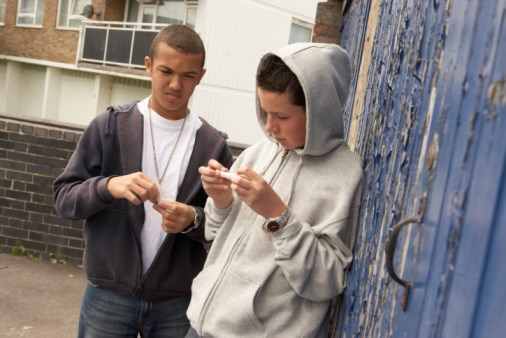Kids are less likely to try marijuana, will delay experimenting with it or smoke it less frequently if they have strong family, school and community supports.
Those are the conclusions of a new report by the McCreary Centre Society based on a survey of B.C. youth aged 12 to 19, including students in School District 43.
The study, titled Blunt Talk and released this week, shows young people living outside of city centres more likely to experiment with marijuana, with about 30% trying it in B.C.'s northern Interior, while teens in the suburbs, such as the Tri-Cities, are less likely to try it, with only 20% admitting to experimenting in this region.
And for those who do smoke pot, getting high to have fun was a motivating factor.
The study is based on results of the McCreary Adolescent Health Survey that was done in B.C. schools in 2013. Some of the more sobering statistics show that the younger kids are when they start smoking pot, the more frequently they will use cannabis when they are older, and the reasons for starting are stressful life events or circumstances, such as going to bed hungry or being discriminated against or victimized.
For these kids, marijuana may be a gateway to harder drugs, alcohol or drug addiction, feelings of hopelessness and problems with mental health.
Still, the report has some good news, painting a picture of reduced or delayed marijuana use compared to 10 years ago. Among the so-called "protective factors" linked to reduced dependence on marijuana are:
• family connectedness — including parents who knew what students were doing in their spare time, ate dinner with them and had an adult in the family with whom the youth could talk;
• positive school experiences — such as feeling safe at school, and having helpful staff and teachers;
• peer relationships — such as having at least one close friend and a friends who would be upset if they tried marijuana;
• community connectedness — such as feeling safe and participation in meaningful extra-curricular activities;
• and self confidence and optimism — i.e., kids who feel good about themselves and anticipated only positive circumstances for themselves are less likely to have used marijuana.
The findings don't surprise Roxann MacDonald of Share Family and Community Services, who said it has long been known that the more confident, connected and positive a youth is, the less likely he or she is to use drugs.
"When there's a strong, supportive community around us, that helps us make better choices," say MacDonald, Share's director of community development, adding, "We will be interested in looking at the report and how that changes some of things we are doing."
Currently, Share offers a number of programs for youth to help them make informed choices, including a Choices and Values program for Grade 8 students, Posse groups for youth who are at risk or already using marijuana and alcohol, and the Assets program.
As well, Share offers counselling for young people and has started a new program where students who have used marijuana and alcohol talk about their experience, called Youth Offering Listening Opportunities. Support groups for parents are also available.
For more information about these programs, call 604-937-6969.



